|
 |
|
8 August 2006 |
|
 |
| |
| Informal
Smoker at the Tower Club bar, August 8th, 5-7pm |
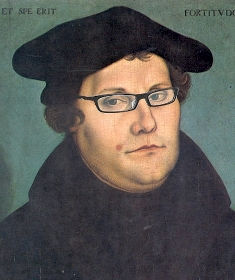 |
| Johnson on
Luther |
|
J.
Douglas JOHNSON, who was struck by a thunder bolt earlier this
summer as he walked from the club to Dearborn Station and now wears
protective rubber headgear, will host and lead the discussion
on August 8th with a brief introduction to the theology of
Martin Luther, in partial preparation for
a series of twelve lectures he will be giving later in the year to his
study group. Suggested reading for advanced Lutherans are
two of Luther's papers with publication anniversaries in early August:
Against Henry (August 4, 1522) and
To Several Nuns (August 6, 1524). Also see Susan Lynn
Peterson's
Life of Martin Luther. Mr. JOHNSON,
when recently pressed by his peers to imbibe strong spirits with his
cigars rather than his usual
Einbecker,
was heard to declare: Bier trinke ich, ich kann nicht anders.
Your loyal secretary is off
this week, on vacation in New York at the Lotos
Club. |
|
|
|
 |
|
Adventures in
reproduction |
|
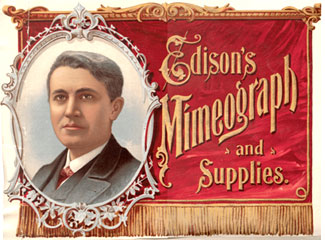 August
8th also marks the
anniversary (1876) of Thomas Edison's patent for the
mimeograph machine. The term mimeograph was coined by
Albert Blake Dick, of Chicago and Lake Forest, after he licensed the invention from Edison for
production and sale. The mimeograph machine was phenomenally
successful as a device for cheap, mass reproduction until the 1990s,
when photocopiers took over. AB Dick and his company made a
fortune on the machine, which in its early years was called the
"Edison-Dick Mimeograph Machine." Albert's son, the reversely
eponymous
Edison Dick, later ran the company, and in the 1950s and 60s owned a
Chicago restaurant called Biggs. August
8th also marks the
anniversary (1876) of Thomas Edison's patent for the
mimeograph machine. The term mimeograph was coined by
Albert Blake Dick, of Chicago and Lake Forest, after he licensed the invention from Edison for
production and sale. The mimeograph machine was phenomenally
successful as a device for cheap, mass reproduction until the 1990s,
when photocopiers took over. AB Dick and his company made a
fortune on the machine, which in its early years was called the
"Edison-Dick Mimeograph Machine." Albert's son, the reversely
eponymous
Edison Dick, later ran the company, and in the 1950s and 60s owned a
Chicago restaurant called Biggs.
BSD Jerry BAUMAN will
continue his story, begun in our last meeting, about swinging his club
with the Dicks at
Dairymen's, and
John H. NELSON, FAIA (below right, in a photo from 1962)
will read from his memoir on 20th-century reproductive
techniques.
We had
one of those contraptions in our basement—why, I don’t remember.
My dad was a small contractor, so I don’t understand why he needed it.
My mother would provide a background of uncustomary cussing as she
twisted or crinkled the sheet while trying to adhere it. I
would try it once in a while myself and end up with gummy stuff all
over myself. My
own favorite reproduction device was the hectograph.
My second grade teacher used one
to prepare little activities and tests, so of course I had to have one
for myself. I can’t remember why it kept me so busy, but I was much happier
with
the gelatinous
matrix of the hectograph than the gooey mess of the mimeograph.
|
|
|
|
Photographs courtesy of the J. H.
Nelson archive, "Young Dick and the Mimeograph Machine." |
|
|
|
|
|
|
|
 In our last meeting
In our last meeting  |
|
IN
OUR LAST MEETING J. Douglas JOHNSON, founding president and
currently
public relations officer for the
Chicago Croquet Club
at Lake Shore and 58th, telephoned while motoring in
from out of town to say that he could not resist stopping for a little
ball-and-hoop on a friend's immaculate lawn, and would be late. Jerry
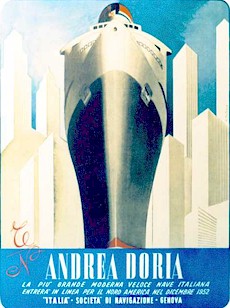 BAUMAN
recounted remarkable successes using a
martingale betting system while gambling in Las Vegas
last week and Edward BRONSON noted that in a game of roulette the history of the ball, which can be modeled as a
random walk (mathematically speaking, a
Markov chain
with integral state space) is irrelevant to the outcome except insofar
as it affects the subsequent betting of others. Jimmy SMITH, wearing a dark
pinstriped suit in the 90-degree whether, apologized for having lost his
necktie in a lunchtime scuffle, and your loyal secretary introduced prospective member Jonathan HALVORSON on
the recommendation of J. F. "Coach" CARLSON. BAUMAN
recounted remarkable successes using a
martingale betting system while gambling in Las Vegas
last week and Edward BRONSON noted that in a game of roulette the history of the ball, which can be modeled as a
random walk (mathematically speaking, a
Markov chain
with integral state space) is irrelevant to the outcome except insofar
as it affects the subsequent betting of others. Jimmy SMITH, wearing a dark
pinstriped suit in the 90-degree whether, apologized for having lost his
necktie in a lunchtime scuffle, and your loyal secretary introduced prospective member Jonathan HALVORSON on
the recommendation of J. F. "Coach" CARLSON.
Former
officer of the deck of the battleship Puerto Rico,
Commander Farley HINTERTHORPE—exhausted and trebly hung over from a very late previous night of
sea-stories at the home of your loyal secretary in rehearsal for
the anniversary of the sinking of the Andrea Doria (July 25) and
from a subsequent five- or six-mile post-midnight
random walk
of his own—was, very
uncharacteristically, silent. A gill of gin with a few dashes of
bitters, quiveringly sipped as a restorative, was insufficient to cajole him into recounting
even a few spare details of the 28th anniversary (July 22) of his father's ship, the
Sergeant Carter, going down in a sudden squall 3-1/2 miles off the
coast of Nantucket, his four-hour swim through rough waters to get help, and the
eventual salvation of all passengers. We have postponed our theme
"Disasters at Sea" to a meeting later this fall, and in the mean time have included here some notes on the
collision of the Andrea Doria
and the Stockholm,
quoted from AndreaDoria.org
|
|
|
|
"The following sequence
[of events on the night of July 25, 1956—fifty years ago
our last meeting] was pieced together from the two books,
Collision Course and Saved. The
events as originally reported in the books are in error. A corrected
sequence of events has been presented here courtesy of Captain Robert J. Meurn of the United States Merchant Marine Academy based on the findings
of John C. Carrothers."
|
Time |
Ship |
Communications |
|
July 25, 1956 9:30pm |
Andrea Doria |
Giannini spotted a pip
on the radar, seventeen miles distant. Franchini took a loran fix on
the Andrea Doria's position, then listened with the radio
direction finder for the signal sent out by the Nantucket lightship.
He plotted the bearing of the signal and reported to Calamai, "We
are headed directly toward the lightship." Calamai ordered a change
of course to two hundred and sixty-one degrees. The new course would
take them one mile south of the Nantucket lightship. |
| 10:00pm |
Stockholm |
Carstens took RDF
readings from Block Island and the Nantucket lightship. In addition
to its regular directional signal, the Nantucket lightship was
broadcasting a special signal that was a coded warning that there
was dangerous fog in the area. Though the meaning of the radio
signal was recorded in a manual on board, Carstens seemed to be
unaware of it. |
| 10:04pm |
Stockholm |
Carstens plotting now
showed the Stockholm to be two and one-half miles north of
its intended course. |
| 10:20pm |
Andrea Doria |
The telephone rang on
the bridge. The forecastle lookout reported he could hear a foghorn
off the starboard bow. Franchini was following the movement of the
pip and he told Calamai they were passing the lightship at a
distance of one mile. Calamai ordered a course of two hundred and
sixty-eight. The Andrea Doria was now headed almost due
west, directly toward New York. |
| 10:30pm |
Stockholm |
Carstens took another
position fix. The Stockholm was farther off course to the
north, 2.7 or 2.8 miles from its intended route, drifting in a
strong current. Carstens ordered a shift in course two degrees to
the south to compensate. At 10:40pm the three seaman rotated duties
and Peder Larsen took the helm. Carstens felt he should keep a close
watch on the compass with Larsen at the helm. Carstens believed the
Danish sailor let his attention wander from strict observation of
the compass needle. |
| 10:40pm |
Andrea Doria |
"It's a ship. We can see
a ship," Franchini yelled out to the others from the chartroom,
where he was crouched over the radar screen. "Seventeen miles
distance, four degrees on the starboard bow. The unknown ship was
almost directly in front of the Andrea Doria's course. A
few sweeps of the radar told the officers that the ship was not
merely a slower one moving west, such as others they had passed that
evening, This ship was moving east, toward the Andrea Doria.
It was disconcerting since the oncoming ship was twenty miles north
of the recommended eastbound route. The ship was drifting slowly to
the right for a safe starboard to starboard meeting. |
| 10:50pm |
Stockholm |
Carstens took another
RDF reading and the ship was now three miles off coarse to the
north. Carstens ordered Larsen to shift course an additional two
degrees south, which would put the ship on a heading of ninety-one
degrees. |
| |
Andrea Doria |
Franchini was tracking
the bearing of the pip. If the bearing continually increased to the
north, it meant the other ship was on a course that would let it
pass safely on the starboard side. If the bearing decreased, then
the ships were on a dangerous course and would have to take evasive
action. The bearing was increasing and if both ships held their
courses, they would pass safely starboard-to-starboard. When ships
meet head-on in the open sea, they are supposed to pass
port-to-port, unless that would force them into a crossing course.
Since the ship was already to the starboard side to the north, there
seemed to be no reason to swing to the right for a normal
port-to-port passage. |
| |
Andrea Doria |
When the other ship was
about seven miles ahead, Franchini switched the radar to a range of
eight miles. Each reading seemed to confirm his observation that the
other ship would pass safely on his starboard, or right side.
Calamai asked "how close will she pass?" Franchini replied, "About
one mile to starboard." |
| 11:00pm |
Stockholm |
At the helm Larsen
reached up and pulled on a cord, ringing six bells-eleven o'clock.
Captain Nordensen heard the bells and knew that the Stockholm
would soon be approaching the Nantucket lightship and he would need
to set a course for the open sea. He carefully put away his logbooks
and diary and prepared to go back to the bridge. |
| 11:06pm |
Stockholm |
Carstens detects the
Andrea Doria to the right of heading flasher on radar after his
third RDF fix and through miscalculation on the radar range believes
it is 12 miles away. He thinks he is looking at the 15-mile range
scale but Andrea Doria in reality is only 4 miles away on the 5-mile
scale. |
| |
Andrea Doria |
When the other ship was
three and a half mile away at a bearing of fifteen degrees, Calamai
ordered a turn of four degrees to port. Calamai reasoned the swing
to the left would open the gap between the two ships and allow them
to pass starboard-to-starboard even farther than the one mile
estimate. Calamai and Giannini watched the horizon carefully on the
starboard. It was important to make visual contact with the other
ship as soon as possible, for radar is at best an imprecise aid to
navigation. Eyes are more trustworthy. |
| 11:08pm |
Stockholm |
Carstens orders course
change to starboard to a course of 118 degrees. |
| 11:09pm |
Stockholm |
Carstens looks at radar
and detects Andrea Doria 6 miles away thinking he is on 15-mile
scale. Actually the Andrea Doria is 2 miles away as the Third
Officer is in reality on the 5-mile range scale. The Stockholm's
Third Officer detects contact on radar to left of heading flasher
and orders a further course change to starboard to 133 degrees. |
| |
Andrea Doria |
Calamai did not expect
to see the other vessel until it was close, because of the fog, but
he was puzzled that he did not at least hear its foghorn. Giannini
studied the radar and saw the other ship at a distance of one and a
half miles and at a bearing of thirty to thirty-five degrees off to
the right. Going outside he searched the starboard side with his
binoculars. Suddenly he saw a blur of lights some thirty-five
degrees off to the right, just as the radar had indicated. |
| |
Stockholm |
When the compass
indicator moved fifteen degrees, the mate ordered, "Amidships." In
response, Larsen brought the wheel back to center. |
| |
Andrea Doria |
The ships were about one
mile apart when the vague glow of the approaching vessel separated
into visible masthead lights. Giannini pointed his binoculars at the
glow and strained to see the masthead lights. There were two white
lights, the lower one slightly to the right of the other. For an
instant, Calamai thought the other ship would pass safely to the
right. It was perhaps the last serene moment Captain Piero Calamai
would ever experience. Giannini was suddenly confronted with the
realization that the lower masthead light of the other ship was
rapidly swinging to the left of the higher masthead light, and the
red light on the port side of the other ship was now visible for the
first time. The other ship was turning directly toward the
Andrea Doria. Calamai had to act quickly, "Hard left!" he
yelled at Helmsman Giulio Visciano. It was a last daring attempt to
outrun a disaster, by turning the Andrea Doria to the left
faster than the unknown vessel was turning to the right. Franchini
blew two short whistle blasts to signal a left turn and straining
under a hard left rudder, the Andrea Doria slid forward for
perhaps half a mile before the turn took effect. But instead of
easing the Andrea Doria away from the menacing ship coming
toward them, the turn exposed the broad mass of the Doria's
side, like a target, to the onrushing bow of the other vessel. |
| 11:10:30pm |
Stockholm |
On the bridge, both
Bjorkman and Carstens simultaneously saw a dramatic change in the
unknown ship's navigational lights, and stared into the darkness in
disbelief. Horror etched across Carstens' face. He could see the
other ship swinging into a hard left turn that was bringing it into
a direct line with the Stockholm's course. Soon, he saw the
entire starboard side of the other ship in front of him. Carstens
could see the sharp steel bow of his ship headed directly for the
vulnerable broadside of the giant in front of him. Carstens had no
time to speculate. The mate pulled hard on the telegraph indicator
to FULL SPEED ASTERN, to lessen the force of the impact by reversing
the engines. At the same moment, he decided to turn the ship's bow
away from the looming target. "Hard starboard!" he yelled at Larsen.
Larsen turned the wheel five full revolutions to the right and held
it firmly in place. Carstens heard the unknown ship's whistle shriek
a protest into the night. Carstens could hear the starboard screw
finally spin backward, but he knew that it was too late. He braced
himself for the impact, and watched helplessly as the white bow of
his ship took aim on the starboard side of the black hull of the
Andrea Doria. |
| 11:11:15pm |
Andrea Doria |
"She is coming against
us!" Calamai yelled in amazement. The captain instinctively drew
back from the railing of the wing. The bow of the intruder seemed to
point directly at him on the bridge, though he knew it would hit
much lower some forty feet below. For an instant Calamai wished he
was down there, where the impact would crush him. It would be an act
of mercy, for the captain saw in the approaching bow a more horrible
destiny. He was a captain! This was his ship! How could this happen
to him? Never in all his years at sea had Piero Calamai felt so
alone. Then the Stockholm struck! |
|
|
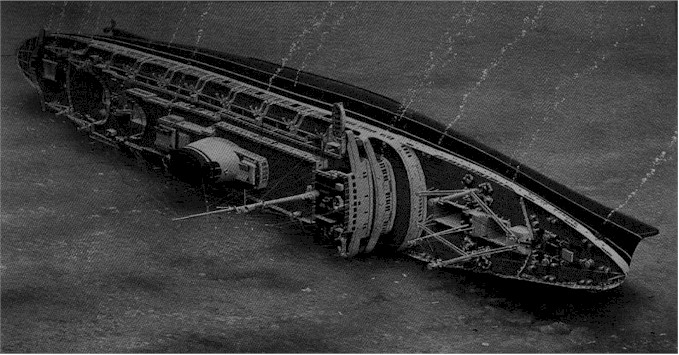 |
|
|
|
 Coming up . . .
Coming up . . .  |
| |
| Informal Smokers at the Tower
Club are scheduled for the following
Tuesdays this summer: August 22; September 12, 26.
A New World Cigar Society Dinner
is scheduled for Thursday,
October 12, Columbus Day. The theme is "What the New World
Contributed to Eating, Drinking, and Smoking." The dinner will feature
cigars, an extensive tequila tasting, and multiple courses based on comestibles
unavailable in the old world such as turkeys, chili peppers, tomatoes, potatoes, corn,
avocados, papayas, pineapples, tapioca, and chocolate. Mark your calendars! |
|
 |
|
Respectfully submitted by |
|
Your loyal secretary |
|
Curtis Tuckey |
|
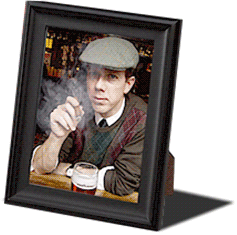 |
|
|


 August
8th also marks the
anniversary (1876) of Thomas Edison's patent for the
August
8th also marks the
anniversary (1876) of Thomas Edison's patent for the
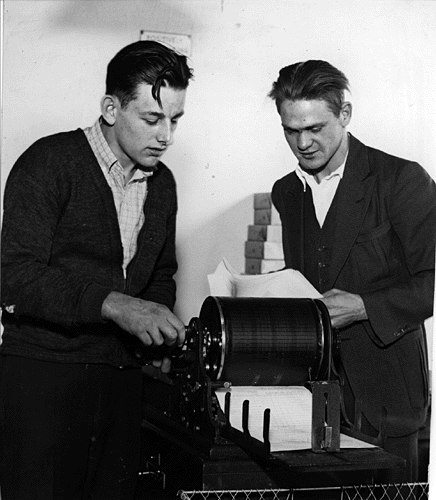
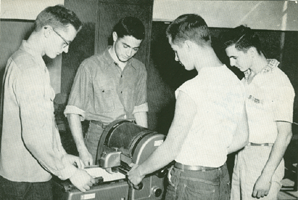
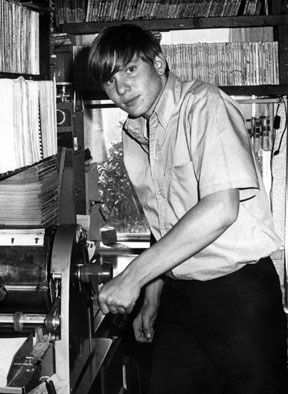
 BAUMAN
recounted remarkable successes using a
BAUMAN
recounted remarkable successes using a

